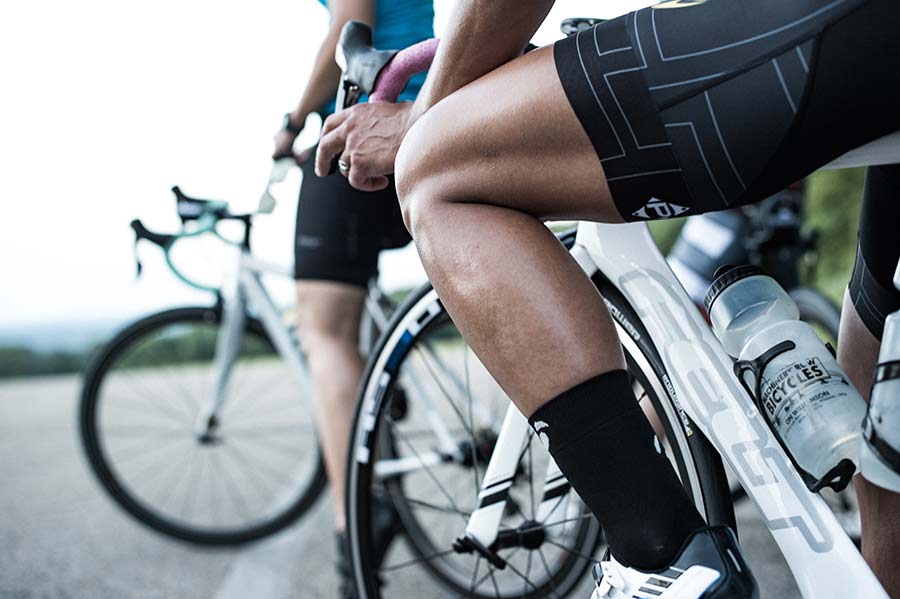A bicycle computer, aka: a head unit, is a key tool in your power training arsenal. After all, all that power training data needs to be displayed somewhere. When paired to your power meter of choice, your head unit becomes mission control – a one-stop-shop for gauging effort and seeing how hard your body is working.
With so much data, and only so much space on a bicycle computer screen, we’re frequently asked, “What performance data should I display on my head unit and why?”
To help us answer this question, we turned to USA Cycling Coach (Level 2), and fellow Madisonian, Casey Lamers. Here he divides data into two categories: output-related and response-related and rounds out the discussion by addressing how different types of riders may opt for different data displays.
By: Casey Lamers, USA Cycling Coach (Level 2)
Output-Related Data
From power to cadence, this type of power training data is all about effort. While this list is not comprehensive, the following are some of the most common and most advantageous numbers to keep an eye on.
Power
The slice of data at the heart of power training, power is the gold standard for telling us how hard we are going. Power is how hard we are pushing on the pedals (torque) times how frequently we are pushing (RPM).
While it might go without saying that displaying power is important, one thing to consider is how you’re displaying power. Power can be displayed with or without averaging. When displayed without any averaging, power data might appear to jump around a bit.

Some like to display without averaging and get used to the jumping around. I often see +/-10% in the reported power when I am doing a steady output on a trainer. Adding some averaging can really help. If you average for too long of a time the number won’t bounce, but it won’t be what you are doing “right now” either. A short time window, say 3-seconds, might be a good amount of averaging.
For sustained efforts, looking at average power for each effort can tell you in a big-picture-way how the effort went. This is the average for the entire effort.
For sprint workouts, you might consider looking a peak power for each sprint.
For structured repeats, sustained or short type sprints, using an interval mode makes sense so that you can see the information for the effort. Sometimes a computer will have an option to show information for the “last interval” which is a nice way to do an effort, hit the lap button, and then get to review the information from that effort.
Another point here, when you display average power I prefer to include zeroes. Some computers give the option to exclude zeroes. For power they should be included.
Normalized Power
This is another way to look at power. Normalized power is a “feels like” score that you can assign to any effort that is 30 seconds or longer. Normalized power takes into account your body’s response time to efforts and how the body buffers work. This data point can also be used instead of average power to determine how hard a work interval was.

Training Stress Score (TSS)
Another power training number related to normalized power is Training Stress Score. TSS tells you how hard the entire workout was. Athletes that train with power should familiarize themselves with TSS, because over time you want to build your fitness by adding training stress and ramping up how much you are doing.
Cadence
Cadence is defined simply as how fast you are pedaling. Some efforts for building torque are done at low cadence. Low cadence can be more muscularly fatiguing. Some efforts are done at high cadence to build muscle firing efficiency. High cadence is generally more cardiovascularly fatiguing and you will generally see a higher heart rate at the same power when pedaling with a high cadence.
When displaying average cadence, I prefer to drop the zeroes from the average. This is because a large portion of a bike riding and racing can made up of coasting. If you coast for 20% of the time, you don’t want to have that reflected in the average cadence. Dropping the zeroes from the average will give you an average for when you were pedaling.
Elapsed Time and Distance
A classic way of measuring what you are doing or what you have done. Almost all interval workouts call for efforts that are a certain length of time. For these workouts, showing elapsed time and current lap time is a must.
Elapsed time and distance are also some common ways aside from TSS to measure what you did as a whole in the workout. I personally find TSS to be more useful, but time and distance are familiar ways of communicating effort.

Response-Related Data
From heart rate to rate of perceived exertion, this type of training data is all about how your body is responding. The two data sources listed below are the two most common ways of gauging how your bike efforts left you feeling.
Heart Rate
One way to find out how hard you are working is with biofeedback from your heart rate. Unlike power, heart rate does not change instantly. There is lag. So, in order to interpret what this number means you need to also do some thinking…
It is important to know your Lactate Threshold Heart Rate (LTHR), or your heart rate plateau at a hard but sustainable pace. For instance, your heart rate in the middle of a 40k time trial.
With knowledge of LTHR you can compare your heart rate at any point in a workout with what you might expect given the effort you have been doing.
There is a lot of complexity to interpreting heart rate, but having it in front of you will help you gain experience. One drawback of displaying heart rate is that it could be used to “talk you out of” an effort. When racing heart rate can be an excellent pacing strategy, but it could also give you a reason to not attempt an effort. For instance, using HR for a TT effort may be a good idea, but maybe leave it off for crit racing.
Rate of Perceived Exertion (RPE)
Another way to measure how our body is responding to an effort is through rate of perceived exertion. This is typically measured on a scale of 0 to 10, with 10 being the most strenuous measure of “how it feels” during an effort. This is not displayed on a computer, but I think it is something that you should be aware of.

Other Performance Data
While the data points listed above are ample information to help you analyze your efforts, there may be other numbers you find valuable. Let’s dig into some of those possibilities.
Speed
Speed used to be what cycling computers displayed as their primary data. I would suggest that this is not even all that important of a measurement. Speed and power are not necessarily coupled. You can be going really fast and outputting very little power (downhill) and conversely going slowly and outputting a lot of power (steep climb).
Sometimes it is nice to know something like average speed for a workout or an interval.
Strava
I have been riding and racing for 20+ years. That predates Strava by a few years! So, what about Strava? While it’s not a display requirement, it can certainly make training a little more entertaining.
I definitely enjoy going out and attempting to PR on segments. Many modern bike computers include mapping and Strava integration. This is a great way to know where the segment starts and ends. No more near misses because you let off the gas too early!
Other Interesting Data
-
GPS Mapping with integrated GPS functionality is another great feature of cycling computers. Although this is not really related to performing a workout correctly, it can let you plan a route ahead of time and not have to stop and figure out where you are or which way to turn.
-
Altitude, especially elevation gain, can be an interesting way to look at your riding in hillier terrain. A 50-mile ride with 5,000 feet of climbing is different than a 50-mile ride with 500 feet of climbing...
-
Kilojoules (kJ) is literally a measure of work. Power times time. 100 watts for 1 hour is 360 kJ. So, 300 watts for 1 hour is 1080 kJ. You can approximate the amount of calories you have used in exercise as somewhere between 100% and 110% of the number of kJ.

Display Data for Different Scenarios
Different riding scenarios might call for different types of data to be brought forward. Depending on your eyesight you might want to limit the number of fields showing, especially when you are trying to see information in the middle of a hard effort.
A review screen might contain different data, like previous interval information. A review screen might also display more fields at the expense of them being smaller. Since you are probably in a recovery period you can take your time and inspect the data more closely.
Intervals
- Current Interval information in a main screen:
- Watts
- Average Watts
- Max Watts
- Elapsed Time
- HR
- Cadence
- Previous Interval information in a review screen:
- Ave Watts
- Max Watts
- Elapsed Time
- Average HR
- Max HR
- Ave Cadence
- Max Cadence
Races
- Watts
- HR (maybe on a second screen instead of primary for crits and road races)
- Cadence
- Elapsed Time and/or Distance
Easy Rides
- Mapping
- Watts / Average Watts / Max Watts
- Elapsed Time
- TSS
- Distance
Whatever your next training or racing ride brings your way, I hope this overview has helped you figure out which data points are worth space on your cycling computer – and which are not.

Casey has coached beginners, National Champions and collegiate teams. Casey currently leads indoor and outdoor group training rides and does one-on-one coaching and training plans. Catch up with Casey at Coach Casey Lamers, LLC, follow him on Facebook or send an email at casey@coachcaseyl.com.